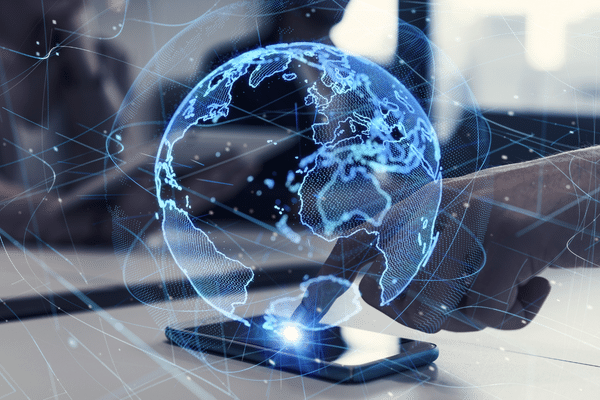
Undoubtedly, the Internet of Things (IoT) is one of the essential branches of new technologies. Many companies can reap the benefits of the IoT – it is a technology that can save money, reduce costs and is environmentally friendly.
But what is behind it all? IoT breaks down into four major components: devices, connectivity, data processing and user interface (UI). With the rapid technological enhancement of the IoT ecosystem, the device is now on the network, connecting devices everywhere to users who can then manage the devices remotely. We expect to see many more of these connected devices as they continue to increase within the next decade.
What is the Internet of Things?
In a nutshell, IoT is a broad term that refers to many types of devices connected to the Internet. These devices can be everything from shipping labels and speakers to cars and planes. They might include smart sensors, lightbulbs, security systems and heavy industrial machinery – all items that communicate back to the internet and work with it.
IoT is a giant network of connected things and people – all of which collect and share data about their use and the environment around them.
The application space for the IoT is very diverse. Different categories of users have different needs and expectations regarding their use. As one of the categories of IoT users, businesses have needs that can accelerate the introduction of new applications. These needs include increasing productivity and ensuring business profitability and cost efficiency through better use of resources, reduced downtime and better use of information in decision-making. Using the IoT can result in efficiency gains and the creation of entirely new business processes or models.
During COVID-19, IoT technologies were used to address the problems presented by the global pandemic. IoT and associated technologies have been an invaluable resource in the fight against the virus.
The need for automated and touchless systems has multiplied since the start of the pandemic. These include frameworks that support remote work, various health scanners, contact tracing systems, crowdsourcing and digital payments.
How IoT can benefit your business
IoT solutions can streamline many processes in a business environment. Machines communicating with each other is something that can simplify many things.
When using the IoT in business, the key thing to remember is that new levels of communication and interconnectedness have significant payoffs for almost any business.
There are several key benefits from IoT that many businesses can explore:
- Understanding big data: The collection and analysis of big data can offer insights into many factors essential to a business’s operations. IoT can provide insights into market trends as well as product performance. You can leverage these insights to help inform your short and long-term business strategies.
- Remote workforce: Research shows that remote work is rising, mainly due to the pandemic. With IoT, the ability for your remote workers to be even more connected to everything from files to inventory equals greater productivity and a more comprehensive range of tasks that can be accomplished remotely.
- Expanding your presence: From more innovative marketing campaigns keeping you connected to your clients to better communications with all members of your workforce, IoT allows your business to expand its presence with consumers and employees. What’s more, through collaboration solutions, you achieve levels of flexibility and speed that empower your presence while it grows.
Accessibility to big data sets, along with the autonomous collection and exchange of data, means that it is becoming easier to gain insights into things like customer behaviours and product performance.
IoT also facilitates the continuous optimization of business processes and impacts employee engagement and performance. In specific industries, IoT can instruct systems to autonomously execute transactions in supply chains when certain conditions have been met.
Artificial intelligence (AI) can easily use time-series data from IoT-connected assets to create forecast models. Using AI and machine learning to generate hyper automated predictive analytics, even citizen data scientists can leverage data and achieve immediate insights at scale. This ultimately reduces complexity and puts the power of IoT data into the hands of the user.
Combining IoT with technologies like AI and 5G, means businesses have endless possibilities. It’s an extraordinary asset to many companies.
IoT can expedite growth and unravel new business opportunities across all industries. But the key to that growth lies in how quickly you can adopt IoT and become a differentiator in your industry.
In short, IoT will allow businesses to help their customers better manage their workforces and improve their products, services and processes.

